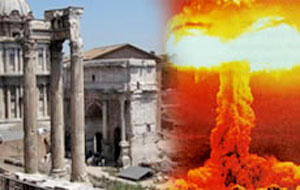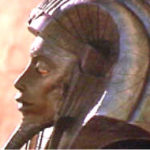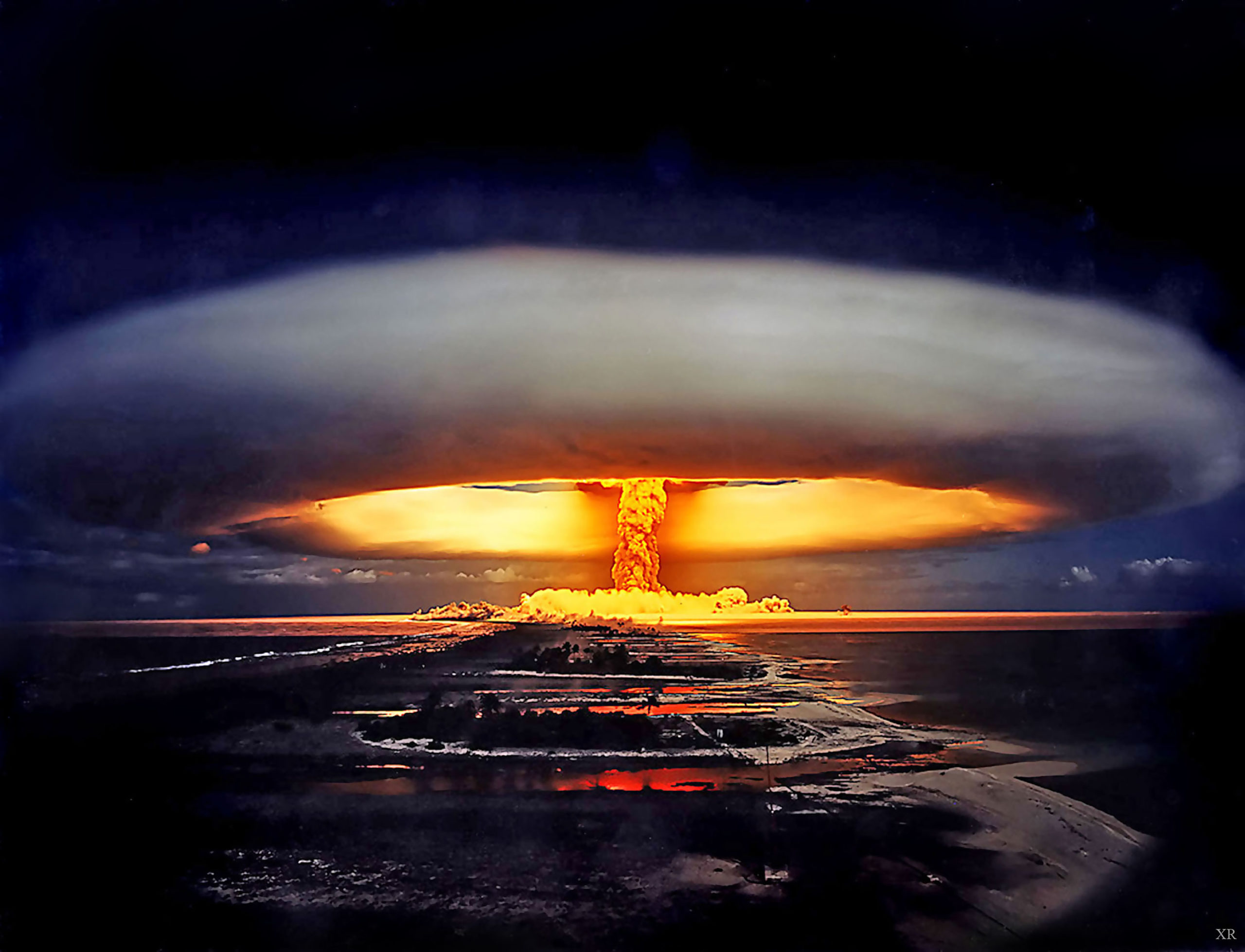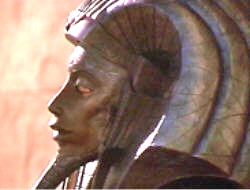by Brad Steiger
December 21, 2007
from TheCanadian Website

Cataclysmic changes in the Earth’s crust.
I find myself now in the seventh decade of life still asking two questions that in one way or another the great majority of my 165 published books have sought to answer:
- Who are we as a species?
- What is our destiny?
The basic reason that I wrote Worlds Before Our Own (2007) is that I have always found it incredible that such sophisticated people as we judge ourselves to be, do not really know who we are.
Archaeologists, anthropologists, and various academicians who play the “origins of Man” game, reluctantly and only occasionally acknowledge instances where unique skeletal and cultural evidence from the prehistoric record suddenly appear long before they should – and in places where they should not.
These irritating artifacts destroy the orderly ‘evolutionary line’ that academia has for so long presented to the public.
Consequently, such data have been largely left buried in site reports, forgotten storage rooms, and dusty archives where one suspects that there is a great deal of suppressed, ignored, and misplaced pre-historical cultural evidence that would alter the established interpretations of human origins and provide us with a much clearer definition of what it means to be human.
There is now a basic academic consensus that the “homo” lineage goes back at least three million years, and that an ancestor of modern man evolved about one million years ago.
Homo Sapiens, the “thinking man,” (our own species), became the dominant planetary life form on a worldwide basis, about 40,000 years ago.
It is difficult enough to explain the sudden appearance of Homo Sapiens at that time, but it is an even more complex question to ponder why Neanderthal and Cro-Magnon man correspondingly disappeared. And academic warfare rages unceasingly over whether or not Neanderthal and our ancestors were two separate species or whether they interbred.
And just as scientists are adding to a growing body of evidence that humankind developed in Africa,
- a Hungarian excavation surrenders a Homo Sapiens skull fragment in a context more than 600,000 years out of alignment with the accepted calendar of man’s migrations across the planet
- hominid fossils are unearthed in Dmanisi, Georgia, indicative of 1.77 million years old
- a hominid tooth found in Niocene deposits near the Maritsa River in Bulgaria is dated at seven million years old
What happens to Darwinian evolution when there are such sites as the one in Australia, which yielded,
- Homo Sapiens (modern man)
- Homo erectus (our million-year-old ancestor)
- Neanderthal (our Stone Age cousin),
…in what appears to be a contemporaneous environment?
Then there is the Tabun site where Homo Sapiens fragments were found in strata below (which means older than) classic Neanderthal bones.
In August 2007, scientists dating fossils found in Kenya challenged the conventional view that Homo Habilis (1.44 million years) and Homo erectus (1.55 million years) evolved one after the other. Dating of new fossil evidence revealed that the two species lived side by side in Africa for almost half a million years.
Somewhere, in what would appear to be a biological and cultural free-for-all, there must lie the answer to that most important question: Who are we?
But just as we are trying our best to fit skeletal fragments together in a manner that will be found acceptable to what we believe we know about our origins, footprints are being found in stone, which, if they are what they appear to be, will make a total shambles of our accepted evolutionary calendar.
In Pershing County, Nevada, a shoe print was found in Triassic limestone, strata indicative of 400 million years, in which the fossilized evidence clearly revealed finely wrought double-stitching in the seams.
Early in 1975, Dr. Stanley Rhine of the University of New Mexico announced his discovery of human-like footprints in strata indicative of 40 million years old. A few months before, a similar find was made in Kenton, Oklahoma. At almost the same time, a discovery of a footprint in stone was revealed in north-central Wisconsin.
In Death Valley, there is ample fossil and skeletal evidence to indicate that the desolate area was once a tropical Garden of Eden where a race of giants lived and fed themselves with palatable foods taken from the local lakes and forests.
To speak of a race of prehistoric giants in what is now the desert sands of Death Valley is simultaneously to refute the doctrine which decrees that man is a relative newcomer to the North and South American continents. While on the one hand, new radiocarbon dates demonstrate that the Bering Land Bridge and Cordilleran Ice Corridor were not passable until 9000 years ago, an increasing amount of physical evidence indicates that man was surely in this hemisphere much earlier than that recent date.
For one thing, corn, an American contribution to the dinner tables of the world, is said to be, at 9000 years, our oldest domesticated seed crop. Some agriculturist had to be in the Americas more than 9000 years ago in order to domesticate the seed.
Ancient squash seeds, peanuts, and cotton balls dated at 8,500 years old found in Peru’s Nanchoc Valley constitute additional evidence that New World farming was well established. Conclusive proof that such ancient farmers did exist in the Americas was offered when a Humble Oil Company drill brought up Mexican corn pollen that was more than 80,000 years old.
The anomalous Indian blood serration and dentition, and the geographic distribution of the American Indian, demands an impossible genetic time scale in which to transform Asiatic immigrants to distinctive New World inhabitants.
Even if we attempt to keep some kind of peace with the accepted theories of New World habitation, we must grant more evolution in 40,000 years in North America than that which took place in more than one million years in Europe, Africa, and Asia.
Skulls found in California, which are clearly those of American Indians, have been dated at 50,000 years old. But we are left with another mystery.
A 140,000 year old American Indian type skull (via metric analysis) has been found at an Iranian excavation site.
- What of the lost Amerindian civilization of Cahokia, complete with pyramids and a great wall? One site, near the present city of St. Louis, may have contained a metropolis of more than 250,000 North American Indians.
- And who constructed the mysterious seven-mile walls of the Berkeley and Oakland, California, hills?
- And which pre-Mayan peoples engineered an elaborate waterworks in Yucatan to irrigate crops over 2000 years ago?
The Caracol Tower at Chichen Itza is a remarkable Mesoamerican observatory that seems to have correlated its findings with similar sites in North America, including Mesa Verde, Wichita, and Chaco Canyon.
One of the most heretical theories that I suggest in Worlds Before Our Own is that the cradle of civilization might possibly have traveled from the so-called New World to the Old.
Now, in December 2007, years after Ruth Shady Solis found the ancient city of Caral, Peru, scientists have accepted the carbon dating of 2,627 B.C.E., thereby establishing the civilization in South America to be much older than the Harappa Valley towns and the pyramids of Egypt.
Caral must now be recognized as “the mother of all civilizations,” the missing link of archaeology, the Mother City.
Scientific knowledge has seemingly been prized by the inhabitants of every culture, known and unknown. Rock engravings, which may be as old as 60 million years, depict in step-by-step illustrations an entire heart-transplant operation and a Cesarean section. The ancient Egyptians used the equivalent of contraceptive jelly and had urine pregnancy tests. The cement used in filling Mayan dental cavities still holds after 1500 years.
No fabric is supposed to have been found until Egypt produced cloth material 5000 years ago. How, then, can we deal with the Russian site which provides spindle whorls and patterned fabric designs more than 80,000 years old?
Not only did the ancient Babylonians appear to use sulphur matches, but they had a technology sophisticated enough to employ complex electrochemical battery cells with wiring. There is also evidence of electric batteries and electrolysis in ancient Egypt, India, and Swahililand.
Remains of a metal-working factory of over 200 furnaces was found at what is now Medzamor in Russian Armenia. Although a temperature of over 1780 degrees is required to melt platinum, some pre-Incan peoples in Peru were making objects of the metal.
Even today the process of extracting aluminium from bauxite is a complicated procedure, but Zhou Chu, famous general of the Jin era (265-420 A.D.), was interred with aluminium belt fasteners on his burial costume.
Carved bones, chalk, stones, together with what would appear to be greatly ornamented ”coins,” have been brought up from great depths during well-drilling operations. A strange, imprinted slab was found in a coal mine. The artifact was decorated with diamond-shaped squares with the face of an old man in each ”box.”
In another coal-mine discovery, miners found smooth, polished concrete blocks which formed a solid wall. According to one miner’s testimony. he chipped one block open only to find the standard mixture of sand and cement that makes up most typical building blocks of today.
A gold necklace was found embedded in a lump of coal.
A metal spike was discovered in a silver mine in Peru. An iron implement was found in a Scottish coal-bed. Estimated to be millions of years older than man is believed to have existed. A metal, bell-shaped vessel, inlaid with a silver floral design was blasted out of solid rock near Dorchester, Massachusetts.
Two hypotheses may explain the presence of these perplexing artifacts:
- that they were manufactured by an advanced civilization on Earth which, due either to natural or technological catastrophe, was destroyed before our world’s own genesis
- that they are vestiges of a highly technological civilization of extraterrestrial origin, which visited this planet millions of years ago, leaving behind various artifacts
Even if a highly advanced extraterrestrial race might have visited this planet in prehistoric times, it seems unlikely such common, everyday items as nails, necklaces, buckles and vases would have been carried aboard a spacecraft deposited in such widely separated areas; for such artifacts have been found in North and South America, Great Britain, the whole of Europe, Africa, Asia, and the Mid-East.
In spite of the general unpopularity of catastrophism, there does seem to be a number of recently discovered “proofs” of ancient cataclysmic changes in the Earth’s crust which may account for the nearly total disappearance of these prehistoric worlds. Geological evidence indicates that these changes were both sudden and drastic might have completely overwhelmed and destroyed the early inhabitants and their cultures.
Perhaps the most potentially mind-boggling evidence of an advanced prehistoric technology that might have blown its parent-culture away is to be found in those sites which ostensibly bear mute evidence of prehistoric nuclear warfare.
Large areas of fused green glass and vitrified cities have been found deep in the strata of archaeological digs at,
- Pierrelatte in Gabon, Africa
- the Euphrates Valley
- the Sahara Desert
- the Gobi Desert
- Iraq
- the Mojave Desert
- Scotland
- the Old and Middle Kingdoms of Egypt
- south-central Turkey
In contemporary times, such material as fused green glass has only been known at nuclear testing sites (where the sand had melted to form the substance). It is quite unsettling to some to consider it possible that these sites provide evidence of a prehistoric nuclear war.
At the same time, scientists have found a number of uranium deposits that appear to have been mined or depleted in antiquity.
If it is possible that nuclear annihilation of a global civilization did occur in prehistoric times, it seems even more urgent to learn who we really are before we find ourselves doomed to repeat the lessons left to us, by a world before our own.












